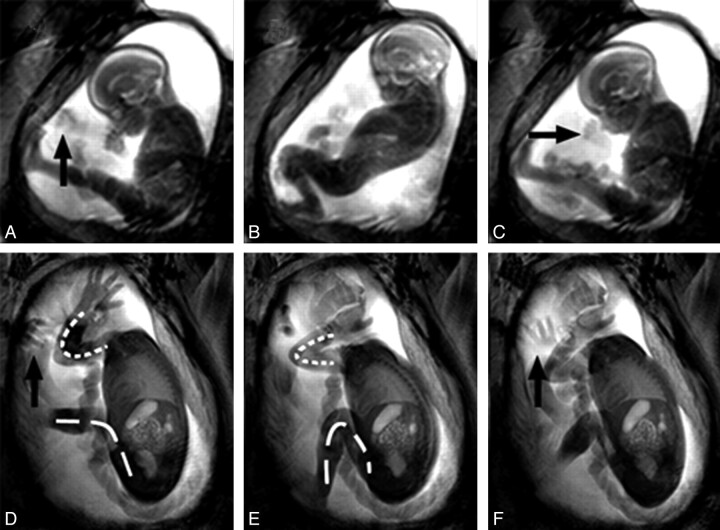Fig 2.
Examples of the fetal movement repertoire. A–C, Time points 0, 4, and 8 seconds of cine data from a GA 22 weeks' fetus. D–F, A GA 30 weeks' fetus at time points 0, 6, and 10 seconds. The younger fetus is engaging in GM, demonstrating a complete flexion at its knees and extension in its trunk, followed by trunk relaxation and knee extension. D–F, The older fetus also shows GM consisting of flexion at the knee joint (dashed line) as well as at the elbow (dotted line). Arrows indicate hands, 1 of which is rotating in the older fetus. The overall variability in amplitude of movements that older fetuses perform is significantly reduced and appears associated with uterine restrictions giving a cramped appearance to movements. This is in contrast to younger fetuses, that tend to make full use of their surrounding space.

